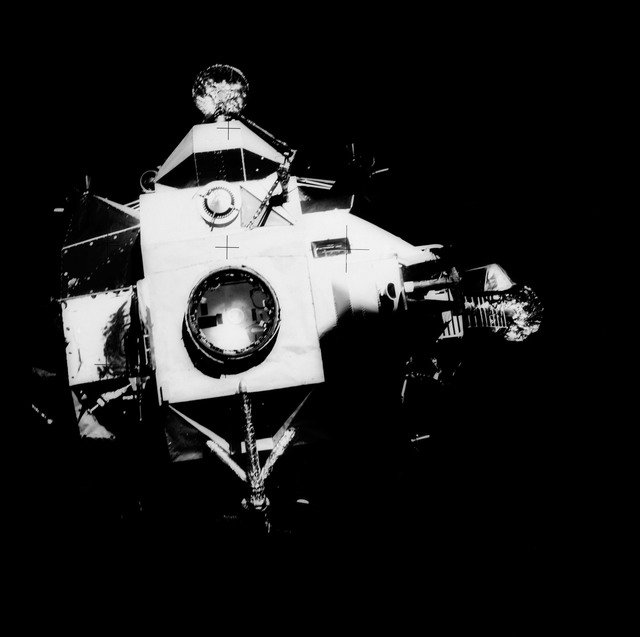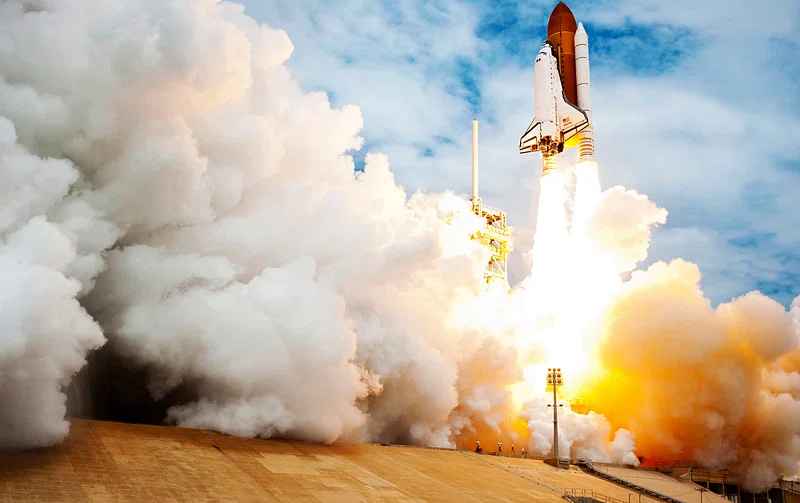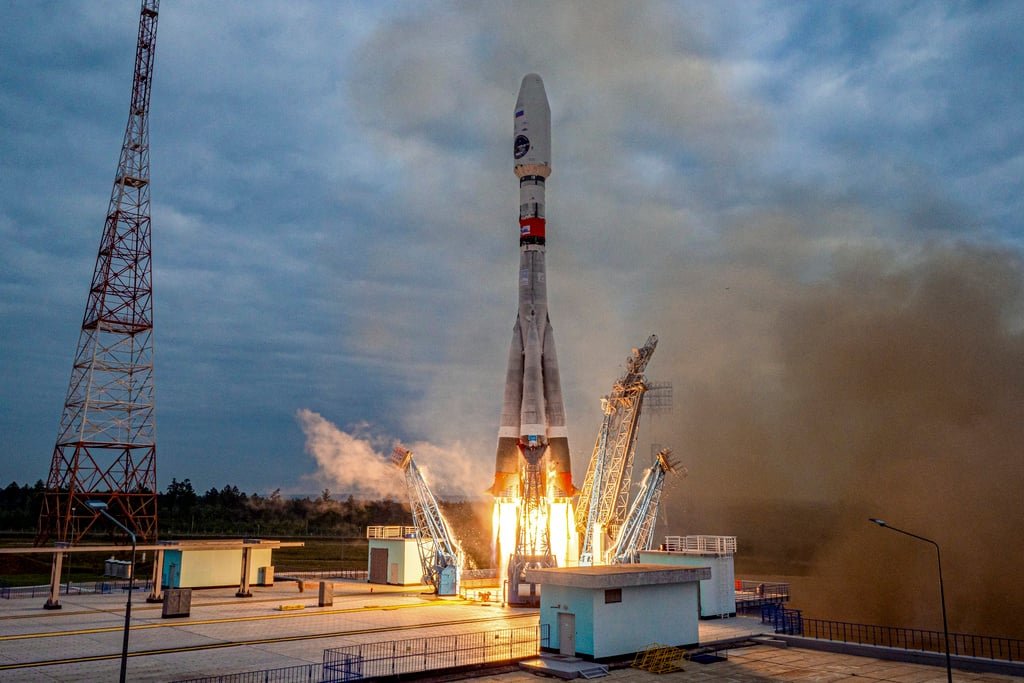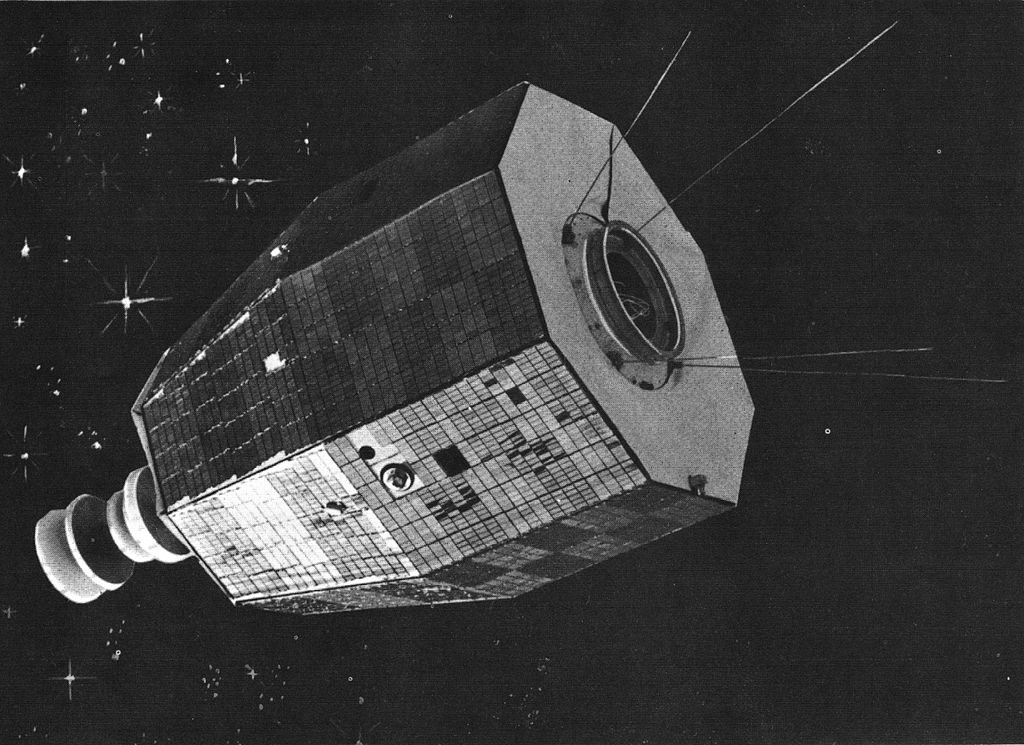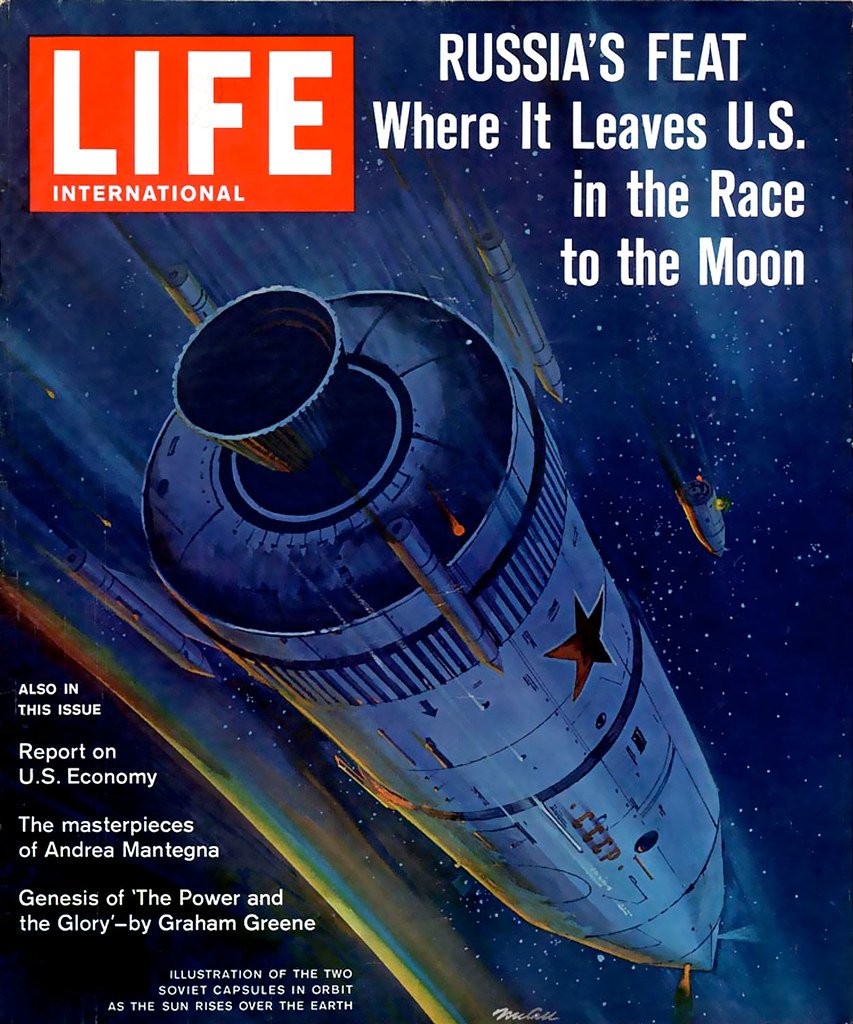In the annals of space exploration, NASA’s Ranger 3 mission stands as a testament to the audacious spirit of scientific inquiry and the relentless pursuit of knowledge. Launched amidst the enthusiasm of the Space Race on January 26, 1962, Ranger 3 embarked on a pioneering journey destined for the lunar frontier. Its mission is to capture unprecedented close-up images of the Moon’s surface, laying the groundwork for future lunar exploration endeavors.
At the heart of the Ranger program, Ranger 3 represented a crucial step forward in humanity’s quest to unravel the mysteries of our celestial neighbor. Equipped with a suite of advanced scientific instruments, including six television cameras and sensors to study cosmic rays and magnetic fields, this spacecraft was poised to revolutionize our understanding of the lunar landscape. Its primary objective was clear: to achieve a direct impact on the Moon, transmitting invaluable data and imagery back to eager scientists and space enthusiasts on Earth.
However, the journey of Ranger 3 was not without its challenges. Despite meticulous planning and engineering prowess, a critical malfunction during the launch sequence altered the spacecraft’s trajectory, thwarting its intended path toward the Moon. Instead of a triumphant lunar rendezvous, Ranger 3 found itself adrift in the vast expanse of space, missing its target by a considerable margin.
Yet, even in the face of adversity, Ranger 3’s legacy endures as a testament to human resilience and ingenuity. While the mission did not achieve its primary objectives, it provided invaluable lessons that paved the way for future successes in lunar exploration. Ranger 3’s setbacks catalyzed advancements in spacecraft design, trajectory planning, and mission execution, shaping the trajectory of space exploration for generations to come.
Table of Contents
What happened to Ranger 3?
Ranger 3, launched on January 26, 1962, as part of NASA’s lunar exploration program, encountered a series of challenges that prevented it from fulfilling its primary mission objectives. The spacecraft was designed for a direct impact on the Moon, transmitting close-up images during its descent. However, a malfunction occurred during the launch, specifically in the Agena B rocket stage, causing Ranger 3 to deviate from its intended trajectory.
As a consequence of this malfunction, Ranger 3 missed the Moon by approximately 36,800 kilometers (22,900 miles) and entered a heliocentric orbit around the Sun instead of achieving a lunar impact. This deviation not only thwarted the mission’s primary objective but also failed the communication system onboard, rendering the transmission of any scientific data or images impossible.
While Ranger 3 itself did not achieve success in terms of lunar exploration, its mission failure contributed valuable lessons to subsequent missions in the Ranger program. The challenges faced by Ranger 3 prompted improvements in spacecraft design and mission planning, ultimately leading to advancements that paved the way for successful lunar missions in the future. Despite its setbacks, Ranger 3 played a pivotal role in shaping the trajectory of lunar exploration endeavors.
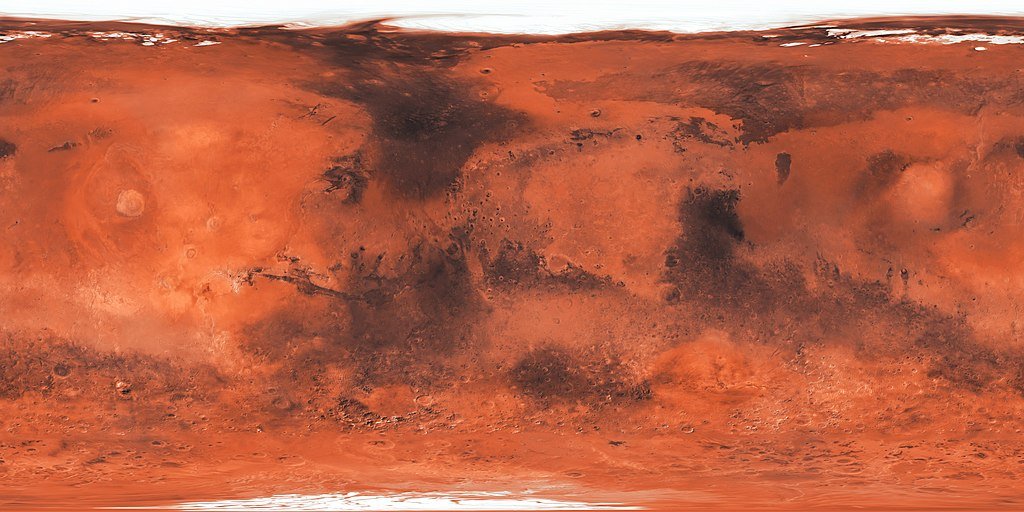
What happened to Ranger 4?
Launched on April 23, 1962, Ranger 4 was the next mission in NASA’s Ranger program following the challenges faced by Ranger 3. Unlike its predecessor, Ranger 4 achieved a significant milestone in lunar exploration. Its primary mission objective was to impact the Moon and transmit scientific data before crashing onto the lunar surface.
Ranger 4 successfully reached the Moon, becoming the first U.S. spacecraft to do so. However, it faced its own set of challenges. A malfunction in the spacecraft’s onboard computer prevented it from returning any scientific data or images to Earth. Despite the communication failure, Ranger 4 accomplished its primary mission by impacting the lunar surface in the region of Alphonsus crater on the far side of the Moon.
While the loss of communication limited the scientific returns of the mission, the impact of Ranger 4 on the Moon provided valuable information for future missions. The successful lunar impact of Ranger 4 demonstrated the capability of precision targeting. It marked a crucial step forward in NASA’s efforts to gather essential data for the Apollo program, which ultimately led to manned Moon landings in the late 1960s and early 1970s.
When did Ranger 7 happen?
Ranger 7, a pivotal mission in NASA’s Ranger program, took place during the early days of lunar exploration. Launched on July 28, 1964, Ranger 7 marked a significant milestone in the United States’ efforts to explore and understand the Moon. The primary objective of the mission was to capture high-resolution images of the lunar surface and transmit them back to Earth before deliberately impacting the Moon.
Ranger 7 was equipped with six television cameras that were designed to take images during the final minutes of its descent to the lunar surface. The spacecraft carried no scientific instruments beyond its photographic capabilities. This mission aimed to provide detailed information about potential Apollo landing sites by studying the Moon’s surface features, helping to pave the way for crewed missions.
The spacecraft successfully executed its mission, transmitting over 4,300 high-quality images of the Moon’s surface before impacting the lunar terrain on July 31, 1964. Ranger 7’s success was a turning point in the Ranger program, redeeming its reputation after previous mission failures. The valuable data and images returned by Ranger 7 played a crucial role in the planning and execution of subsequent Apollo missions, contributing significantly to the success of the Apollo lunar landing program in the late 1960s and early 1970s.
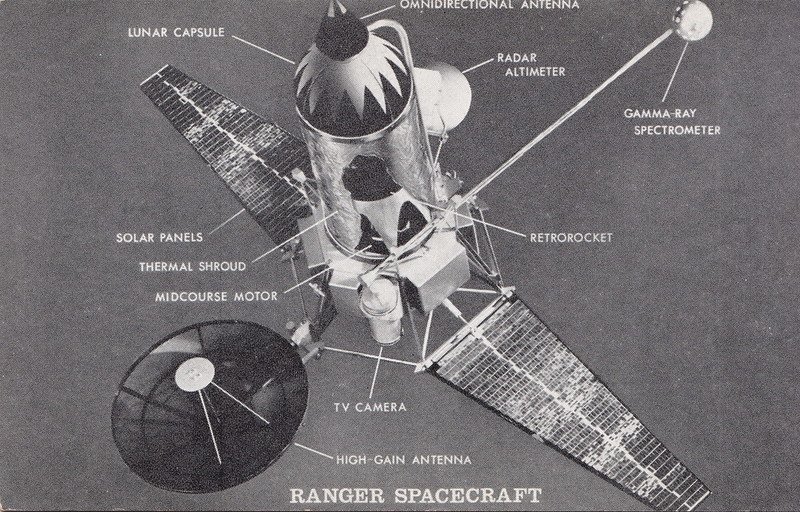
History of Ranger 3
Ranger 3 was a spacecraft in NASA’s Ranger program, which aimed to obtain close-up images of the Moon and transmit them back to Earth. The primary objective of the Ranger missions was to gather data that would help in the planning of future Apollo Moon landings. Ranger 3 was the third spacecraft in this series and was launched on January 26, 1962.
Here is a detailed history of Ranger 3:
Objective and Mission Design
Ranger 3, a pivotal spacecraft in NASA’s lunar exploration program, was engineered with the ambitious goal of executing a direct impact on the Moon’s surface while transmitting crucial imagery during its descent phase. Launched on January 26, 1962, as part of the Ranger program, its primary objective was to provide unprecedented close-up views of the lunar terrain to aid in the planning of future manned missions.
Equipped with a sophisticated suite of scientific instruments, Ranger 3 carried six television cameras that played a central role in capturing and relaying images of the Moon’s surface. These images were intended to offer detailed insights into the topography, composition, and potential landing sites for subsequent lunar missions.
Beyond its imaging capabilities, Ranger 3 housed a complement of scientific instruments designed to investigate various lunar phenomena. The spacecraft’s instrumentation aimed to study cosmic rays, solar particles, magnetic fields, and other aspects of the lunar environment. This comprehensive scientific payload was intended to enhance our understanding of the Moon’s geophysical properties and cosmic influences.
Despite facing challenges, including a malfunction in the launch vehicle that caused a deviation from its intended trajectory, Ranger 3’s mission laid the groundwork for future lunar exploration efforts. Its scientific objectives, coupled with advancements in imaging technology, paved the way for subsequent missions that ultimately contributed to the success of the Apollo program and expanded humanity’s understanding of the Moon.
Launch
On the historic night of January 26, 1962, at precisely 21:30:00 UTC, NASA’s Ranger 3 spacecraft embarked on a groundbreaking mission from the Cape Canaveral Air Force Station. Positioned atop an Atlas-Agena B rocket, this launch marked a crucial chapter in the United States’ ambitious foray into lunar exploration during the early years of the space race.
As the clock counted down, the roar of engines echoed across the Florida coast, propelling Ranger 3 into the celestial theater. The Atlas-Agena B rocket, a reliable workhorse of the era, thrust the spacecraft toward the heavens with the precision required for a rendezvous with the Moon. The launch was not merely a technological feat; it represented the convergence of scientific curiosity, engineering prowess, and national determination to push the boundaries of human exploration.
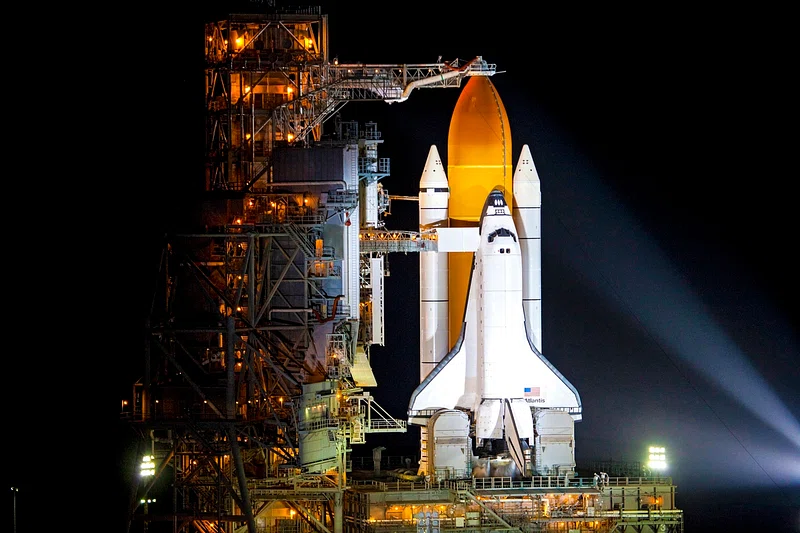
Amidst the anticipation and scrutiny, Ranger 3 carried the hopes and aspirations of a nation eager to unravel the mysteries of Earth’s celestial companion. Its payload included an array of cutting-edge instruments, underscoring its mission to capture close-up images of the lunar surface, a task critical to the broader goal of preparing for future crewed lunar landings. Little did the onlookers know that Ranger 3’s journey would be fraught with challenges, ultimately leading to a different trajectory and an unforeseen outcome. However, its launch on that January night was a moment of bold exploration that echoed through the corridors of space history.
Trajectory and Course Corrections
Regrettably, the ambitious mission of NASA’s Ranger 3 took an unexpected turn as a critical malfunction unfolded in the spacecraft’s launch vehicle. The Agena B stage, a pivotal component designed to propel Ranger 3 toward its intended lunar trajectory, encountered a failure. This unforeseen setback resulted in the spacecraft deviating from its planned course, missing the Moon entirely.
The primary goal of Ranger 3 was a direct lunar impact, a mission parameter crucial for capturing close-up images of the Moon’s surface. However, the malfunction in the Agena B stage thwarted this objective, steering Ranger 3 onto an unintended path. Instead of the anticipated lunar rendezvous, the spacecraft found itself in a heliocentric orbit around the Sun.
This unplanned trajectory represented a departure from the mission’s core objectives, leaving scientists and engineers grappling with the disappointment of an unfulfilled mission. The communication system on Ranger 3 had also succumbed to the malfunction, rendering it incapable of transmitting any scientific data or images back to Earth. Despite the mission’s failure to achieve its primary objectives, the unexpected heliocentric orbit and the challenges faced by Ranger 3 contributed valuable insights and lessons that would inform subsequent missions in the ongoing quest for lunar exploration.
Mission Failure
Ranger 3, launched on January 26, 1962, as part of NASA’s lunar exploration program, encountered critical setbacks that thwarted its primary mission objectives. Despite meticulous planning, the spacecraft missed the Moon by a substantial margin, orbiting about 36,800 kilometers (22,900 miles) away from its intended target. This deviation in trajectory resulted from a malfunction in the Agena B stage of the launch vehicle, preventing Ranger 3 from achieving the crucial lunar impact that was central to its mission.
Compounding the disappointment, the communication system on board the spacecraft failed, dealing a double blow to the mission’s scientific goals. With the malfunction, Ranger 3 was unable to transmit any scientific data or images back to Earth. The loss of communication meant that the valuable insights and close-up observations intended to be gleaned from the lunar descent were regrettably lost.
While Ranger 3 did not achieve success in its primary mission objectives, the mission was not without significance. The challenges encountered with Ranger 3 contributed to the refinement of subsequent spacecraft designs, trajectory planning, and mission execution. These lessons learned played a crucial role in the ultimate success of later missions in the Ranger program and the broader context of lunar exploration efforts. Ranger 3’s setbacks became instrumental in shaping the trajectory of future space exploration endeavors.
Legacy and Impact
Ranger 3, though marred by its inability to achieve the intended lunar impact and transmit data due to a malfunction, played an indispensable role in advancing the capabilities of subsequent missions within the Ranger program. Despite its setbacks, the mission yielded invaluable lessons and insights that propelled crucial improvements in spacecraft design, trajectory planning, and overall mission execution.
The challenges faced by Ranger 3 prompted a meticulous examination of the mission’s intricacies, leading to a profound understanding of the complexities involved in lunar exploration. Engineers and scientists meticulously dissected the technical malfunctions and communication failures encountered during the mission, using this knowledge as a catalyst for enhancing future spacecraft designs.
This mission’s tribulations were pivotal in refining trajectory planning techniques, ensuring that subsequent missions could precisely navigate their course to the Moon. The data gleaned from Ranger 3’s shortcomings became a cornerstone for mission planners, allowing them to fine-tune orbital mechanics and optimize the approach for future lunar endeavors.
Ultimately, the setbacks of Ranger 3 proved instrumental in shaping a more resilient and informed approach to lunar exploration. The lessons learned from this mission laid the groundwork for the success of subsequent missions, contributing significantly to the broader understanding of space exploration and advancing the capabilities of future spacecraft destined for the Moon.
Follow-up Missions
Following the setback of Ranger 3, subsequent missions in the Ranger program persisted in their pursuit of successful lunar impacts and the acquisition of crucial scientific data. Among these missions was Ranger 4, launched in April 1962, which played a pivotal role in the early stages of lunar exploration.
Ranger 4 shared some similarities with its predecessor, encountering its challenges. Unfortunately, a communication failure marred the mission, preventing the transmission of scientific data back to Earth. Despite this setback, Ranger 4 achieved a historic milestone by successfully impacting the lunar surface. This marked a significant accomplishment, as it became the first U.S. spacecraft to reach and make contact with the Moon.
While the absence of communication limited the immediate scientific returns from Ranger 4, the mission demonstrated the feasibility of reaching the lunar surface and laid the groundwork for subsequent missions in the Ranger program. The lessons learned from both the successes and challenges of Ranger 4, coupled with advancements in technology and mission planning, contributed to the evolving understanding of lunar exploration and paved the way for future missions that would ultimately lead to the iconic Apollo lunar landings.
NASA’s Ranger 3, launched on January 26, 1962, was a pivotal spacecraft in the ambitious Ranger program, aiming to provide unprecedented close-up images of the Moon. Armed with six television cameras and scientific instruments, its primary mission was to impact the lunar surface and transmit vital data back to Earth. Unfortunately, the mission faced a setback when a malfunction in the launch vehicle resulted in a trajectory deviation, causing Ranger 3 to miss its lunar target.
As a consequence of this unexpected turn of events, Ranger 3 found itself in a heliocentric orbit around the Sun, far from the intended lunar impact. The communication system failure further compounded the mission’s challenges, preventing the transmission of scientific data or images back to Earth. Despite these setbacks, the mission was worthwhile.
Ranger 3’s failure provided crucial insights into spacecraft design, trajectory planning, and mission execution, contributing significantly to the learning curve of lunar exploration. Lessons learned from its shortcomings played a pivotal role in refining subsequent missions in the Ranger program. This period of trial and error it ultimately paved the way for later successes, such as the triumph of Ranger 7, which successfully impacted the Moon in 1964 and significantly advanced the understanding of the lunar surface, setting the stage for future crewed lunar missions.



